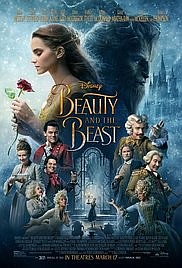3/24/2017

The creator of the magical world of Disney, like many other figures in American history, Walt Disney was a complicated soul. An entire generation grew up with Mickey Mouse and company, as the Disney name expanded into a global brand. But despite the success, the brand has not been exempt from criticism, thanks in part to racist characters and tired stereotypes once seen in hits like 1941’s Dumbo or the blatantly offensive, Songs of the South.
By the time I’d discovered this as an adult, like countless others, I’d already fallen in love with Disney films. Born during the eighties, I’d turned the VHS tape off when Bambi’s mother was shot, learned every word to 1992’s blockbuster Aladdin, and sobbed when Scar callously pushed Mufasa from a cliff in The Lion King.
Some of the creators of our fondest childhood memories were also responsible for the incredibly racist material. It’s just something you come to reconcile with as a minority in America. No different really than when I’d learned that John Wayne - one of my grandfather’s favorite actors - was a bigot. Yikes.
But as times have shifted, film and television programming has grown to reflect America’s changing demographics. From Sesame Street’s recent introduction of Julia - a four-year-old with autism - to leading characters like Disney’s own Moana; there’s work to be done, but Americans of all backgrounds are (finally) seeing themselves represented. Just who deserves representation, however, continues to be debated, as seen during the recent controversy surrounding the live-action adaptation of the 1991 classic, Beauty and the Beast.
Conservative outrage was swift, with calls for a complete boycott of Disney after director Bill Condon suggested that the film would have an “exclusively gay moment.” In truth, the blink-and-you-miss-it moment comes courtesy of LeFou, Gaston’s (Luke Evans) sidekick, seen dancing with another man in the final seconds of the ballroom scene. For some, the damage has been done. Russia has banned the film from being viewed by anyone younger than 16, while an Alabama movie theater refused to show it all together.
Despite it's own troubled history with diversity, Disney has shown that they are willing to move in a more inclusive direction, whether the public agrees or not. Parents should have a say in what their children consume, but one can only wonder where the outrage was years ago when Disney was trotting out black centaurs in films like Fantasia. Or when young girls were being taught that their only hope for survival was by finding a magical prince and riding off into the sunset.
As Ian McKellan recently explained, “People who don’t like the idea of gay characters appearing in fairy stories should think what they would think if they were gay themselves and why should they be excluded?”
